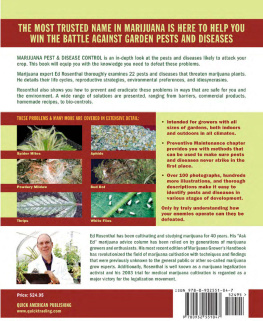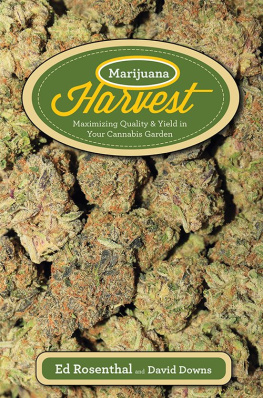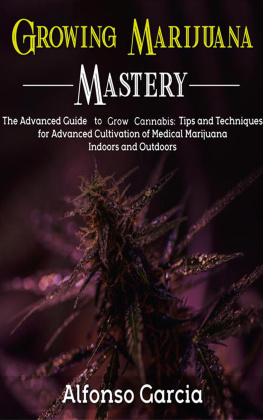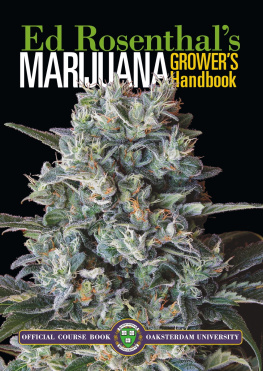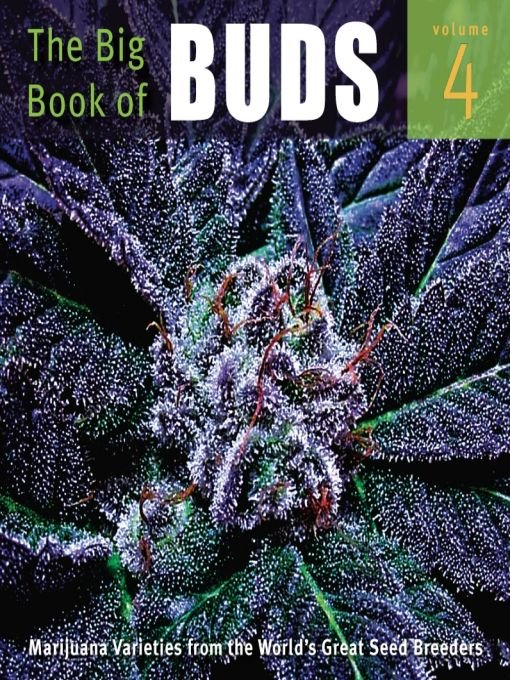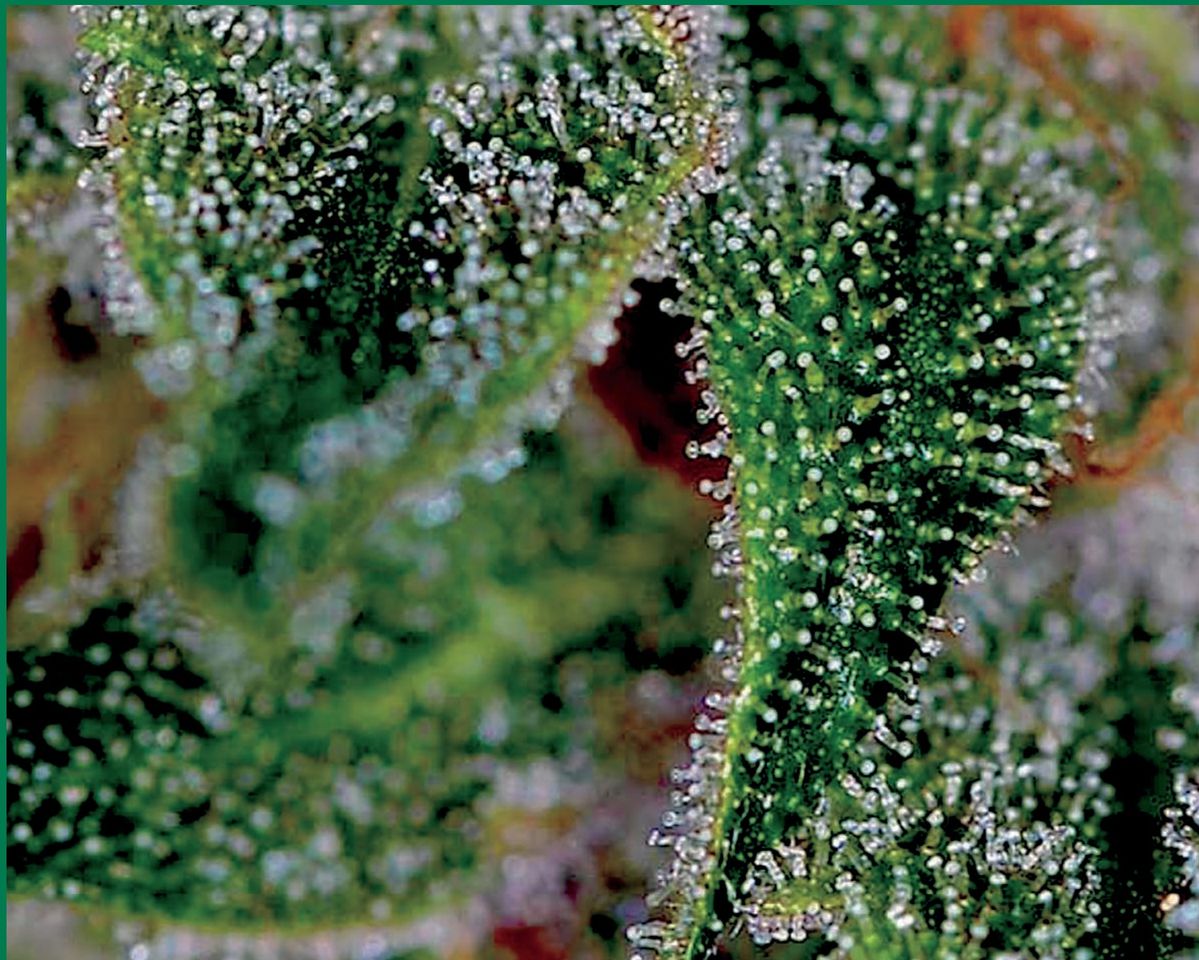Table of Contents
This volume is dedicated to Marc Emery, who is presently in prison for defending freedom in North America.
She can dance a Cajun rhythm,
Jump like a Willys in 4-wheel drive,
Shes a summer love for spring, fall and winter,
She can make happy anyone alive...
Shes got everything delightful,
Shes got everything I need,
A breeze in the pines and the sun and bright moonlight,
Lazing in the sunlight, yes indeed.
From Sugar Magnolia
Words by Robert Hunter, Bob Weir
Reproduced by arrangement with Ice Nine Publishing Co., Inc.
(ASCAP)
Introduction
Introduction to Volume 4
By Ed Rosenthal
Marijuana is an amazing plant. Its the proverbial outlaw that is now gaining respectability. Marijuana bends the rules, breaks the rules, and ignores the rules in so many ways: some are obvious and some are obscure. Marijuana defies authority. It has been outlawed, condemned, and eradicated many times. Despite these hardships it comes back to change society.
Most recreational drugs blunt your thinking. Alcohol, most pills and opiates take you away from reality to a duller, more comfortable place. Marijuana forces the world on you in surreal colors. It stops your mind from filtering thoughts, so more bubbles up into consciousness. Instead of inhibiting thought, marijuana expands perception, encouraging ingenuity. It may also unmask the absurdity of laws that criminalize an unadulterated, free growing plant. In many cases, humans who become allied with marijuana also become its unrepentant defenders, defying authority when authority is clearly working against a more enlightened and truthful approach to cannabis.
Most domesticated plants, such as corn and wheat, are dependent on humans. They have lost their ability to live on their ownto go feral. Not so for cannabis. It has gone feral more than once, and while it has a symbiotic relationship with humans it is always ready to take off on its own should its companions abandon it.
Marijuana has also conquered territory few other plants could before: The Great Indoors. As the world becomes more urbanized, farming is becoming more isolated and fewer people are engaged in it. Marijuana has created a new generation of urban farmers. With the exception of an occasional tomato or pepper plant, few other plants have proliferated indoors the way marijuana has.
Only a few large agricultural companies are involved in breeding most plants. Because most types of fruits, vegetables, and flowers are commercialized, we are accustomed to seeing only a few varieties, and few hobby gardeners attempt to cross breed. By contrast, marijuana is a plant that encourages amateur breeding. Marijuana is the only annual plant that is dioecious. It has separate male and female plants. No other annual plant has this characteristic. At a basic botanical level, this makes marijuana breeding more paint-by-numbers than almost any other hobby plant.
As an outlaw plant for most of the last century, marijuana has passed hand to hand, and its cultivation has spawned thousands of breeders. Most of them are not commercial. They are just making a cross or two to see what happens. The commercial breeders, those whose achievements are depicted in this book, are also an anomaly. Instead of becoming more concentrated, the seed industry has expanded as more and more breeders have gone commercial and are bringing the fruits of their labor to market. This is exactly the opposite of what is happening in the world of commercial seed breeding of other plants, where the number of companies involved in commercial breeding continues to shrink.
The resulting quality of the plants has also improved. They have been adapted to specific environments and are easier to cultivate, produce higher yields, and mature more quickly than their predecessors.
So here we are. This book, the fourth edition in the series, heralds a new maturity in seed breeding. The early crosses are called old school. The effects are getting more sophisticated, exploring new areas and turning us on in new ways.
This book represents the newest chapter in a rapidly evolving industry. But that does not do the phenomenon justice. It is much more than an industry. This book records the result of the passion, labor, and insight that continues to create new varieties with more flavors and nuances to offer the aficionado. All are guaranteed to turn your head.
The icon sections can be used as a quick key to varieties. Buds 3 added the feminized seed, and new to Buds 4 is an icon that indicates whether a variety is autoflowering. Each icon is described here in detail.
The Icons
The first icon deals with plant type. The possibilities are:
represents plants with over 90% sativa background
represents plants with over 90% indica background
Sativa plants grow from the equator through the 50th parallel. They include both marijuana and hemp varieties. The plants that interest marijuana growers come from the equator to the 20th parallel. Countries from this area are noted for high-grade marijuana and include Colombia, Jamaica, Nigeria, Congo, Thailand and Sumatra. Populations of plants from most of these areas are quite uniform for several reasons. Cannabis is not native to these areas. It was imported to grow hemp crops and then it adapted over many generations with human intervention. Each population originated from a small amount of fairly uniform seed from the 4550th parallel. Then the populations evolved over hundreds of generations with the help of humans. This led to fairly uniform populations in climates that varied little year to year.
Sativas grow into 515 feet (1.54.5 meters) tall symmetrical pine-shaped plants. The spaces between the leaves on the stem, the internodes, are longer on sativas than indicas. This helps to give sativas a taller stature. The lowest branches are the widest, spreading 1 to 3 feet (.51 meter); since the branches grow opposite each other, plant diameter may reach 6 feet (1.8 meters). The leaves are long, slender, and fingerlike. The plants are light green since they contain less chlorophyll.


